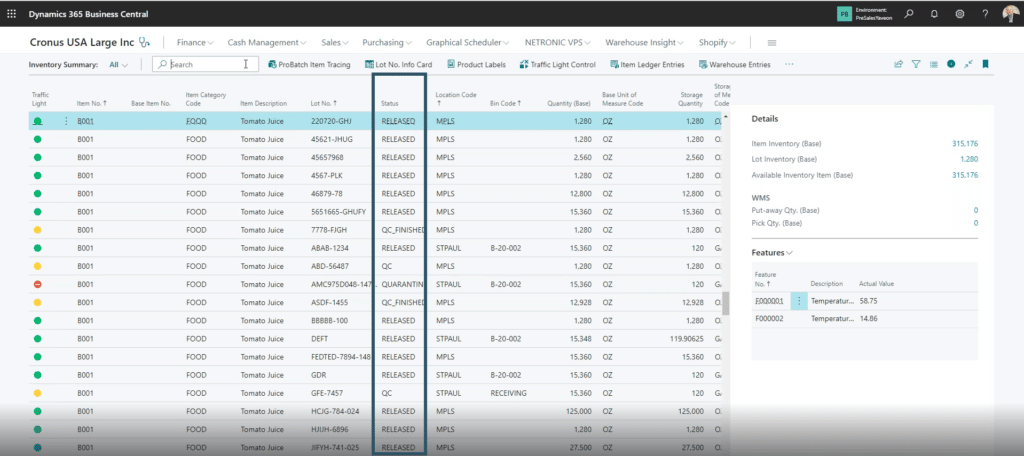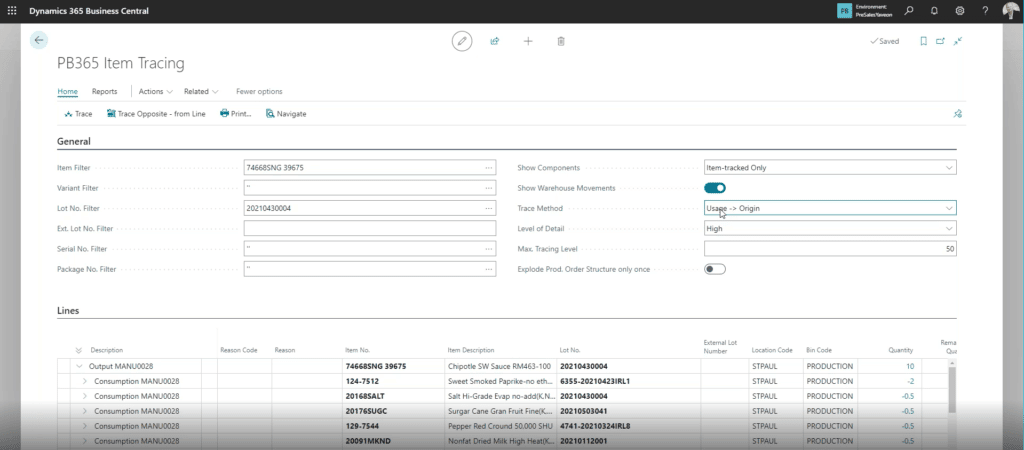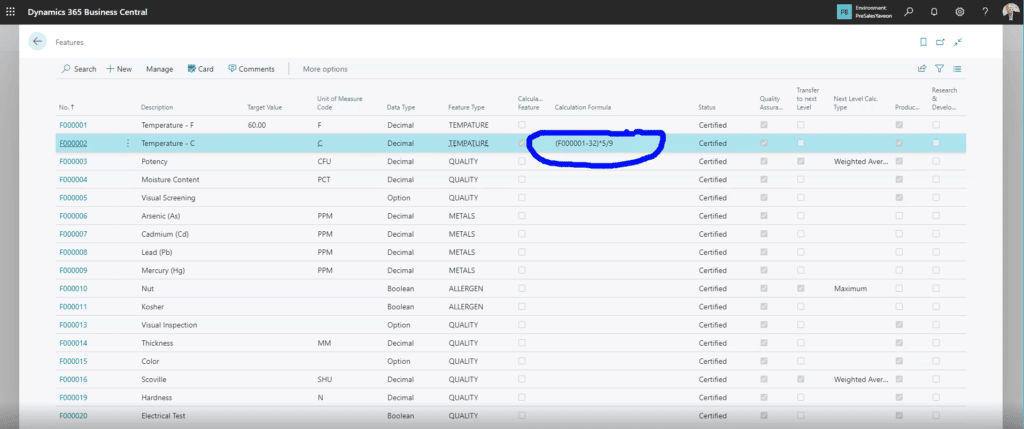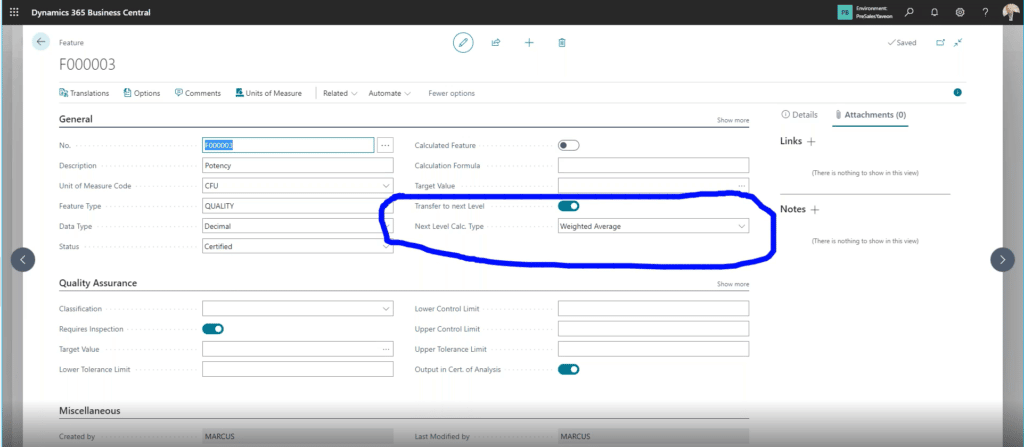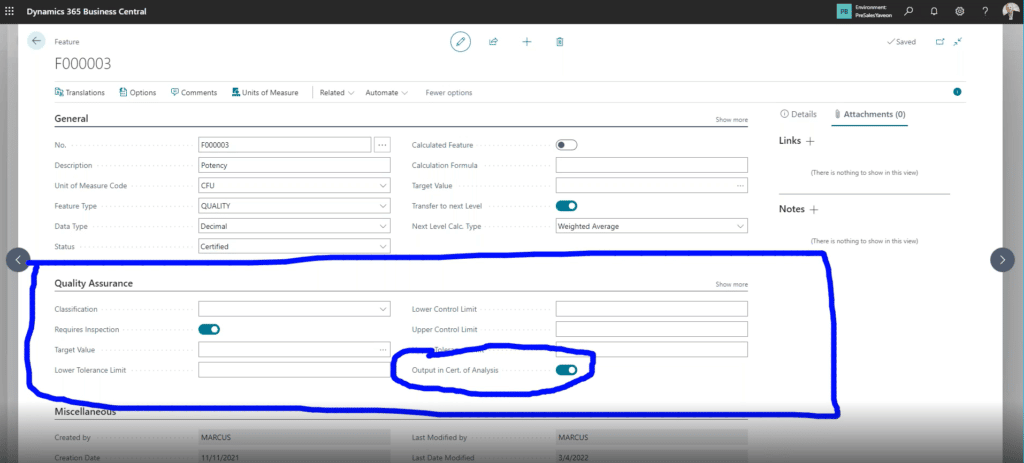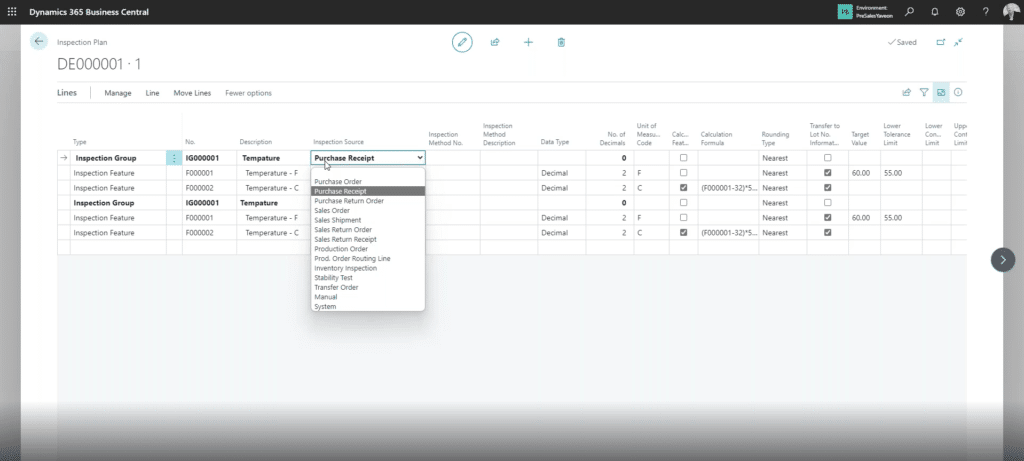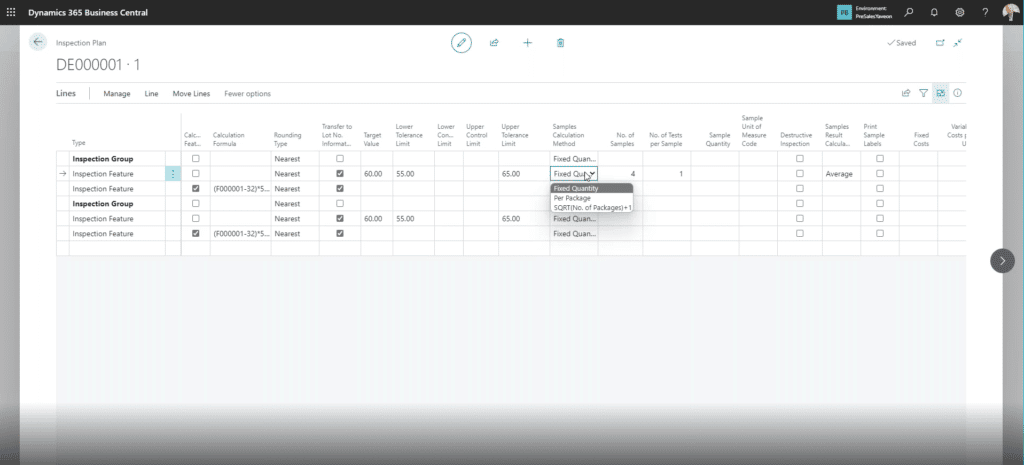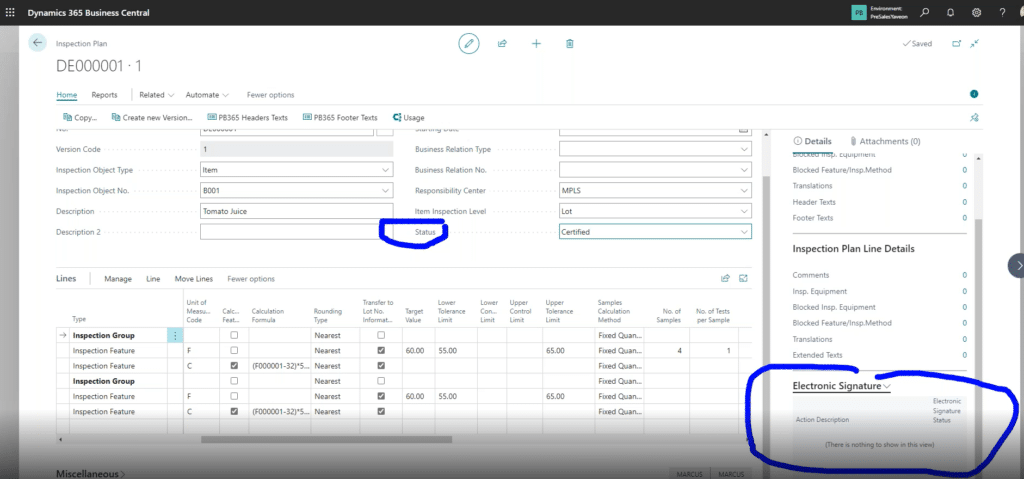Using Dynamics 365 Business Central and YAVEON ProBatch to Optimize Your Batch Manufacturing Process: Quality and Compliance
Microsoft Dynamics 365 Business Central, powered by YAVEON ProBatch helps you manage the quality of your products to ensure you are getting quality goods out to your customers quickly.
This can help companies in the pharmaceutical, biotechnology, cosmetics, foods, medical technology, and chemical manufacturing industries.
Track the Quality of Products from Start to Finish with Dynamics 365 Business Central and YAVEON ProBatch
First we’ll take a look at some quality and inspection features to give you and your team a way to track your products and keep things in order.
Lot Management and Posting Rules
Dynamics 365 Business Central comes with serial number and lot tracking capabilities out-of-the-box. YAVEON ProBatch brings additional functionality to this process by helping you manage the disposition of a lot and define posting rules.
Posting rules dictate when, where, and how you can use a particular lot based on its status, expiration date, or other characteristics you define.
We have identified two main areas in this field:
- Lot Status – This allows you to define the status of your lot based on your business process and the terminology you use and create rules around the status itself
- Status Types – You will want to define these based on your terminology as they help you determine where your lot is in its lifecycle process. Some example include:
- Quarantine – It has been received but still has to pass safety/quality inspections
- QC_Finished – This is an intermediary status noting the QC process is finished but the product is still awaiting final approval
- QC - The quality team is done looking at it, but you might need to send it out to an outside inspector for specific parts
- Released – This means the lot has passed all inspections and is ready to enter your manufacturing process
Item Tracing
You can look at a series of consumption records to see the raw material inputs into the finished goods. You can track who interacted with certain items or lots, where issues might have come up, and the date and time of the issue.
There are two main trace methods:
- Usage to Origin – Traces the item from finished output to its origin in your production process
- Origin to Usage – Traces the item from your inbound purchase order to its being consumed into your process
You can also use the Packaged Tracking feature to track products based on their package or serial number. If you have large quantities (a full pallet, for example) you can use the Load Carrier Tracking feature.
Calculation Formula
You can take several different features or samples of a product to ensure it is ready and combine their inspection values to generate an average score. You can also set parameters for when a product is approved or rejected.
You can also customize the rating scale based on your company’s vernacular.
Transfer Values
You can use Next Level Calculation types to transfer ratings or values on your products to each stage of your inspection process as it progresses. A Next Level Calculation type will continue to give you scores throughout your entire process.
Next Level Calculation types include:
- Additive
- Average
- Minimum
- Maximum
- Weighted Average
Quality Assurance
This lets you take a specific feature value and output that to the certificate of analysis, which is a document that assures your client that you have taken all the necessary steps to ensure the product is safe and ready for market.
Inspection Sources
This feature lets you identify exactly what you are inspecting and when you are going to do it. You can also flag inspections throughout your process to determine when they will take place.
There are several main inspection sources:
- Sales Cycle
- Production Order Cycle
- Inventory Inspections and Stability Tests
- Transfer Order
Inspection Methods
If you have specific evaluation methods that are part of your inspection process, you can set parameters and restrictions around the end user’s ability to evaluate them. You can also assign inspections to specific people who have the right training and certifications to complete them.
Some inspection methods you can define include:
- Target Value and Lower/Upper Control Limits – Set a target value for your product
- Samples Calculation and Samples Result in Calculation – Automatically calculate a rating or score for your products
- Destructive Inspection – Mark items that don’t pass the inspection to be removed
- Print Sample Labels – Print labels with important information for customers
- Output on the certificate of analysis – Include this information on documents confirming a product has been inspected
Stay Compliant by Combining Dynamics 365 Business Central and YAVEON ProBatch
Now that you understand how this integration can help you with your inspections and quality control, let’s switch to looking at how it can also help you with compliance.
Change Log Transactions
With this, you can audit any field in the system and can track specific fields. If you create a field and it is changed in the system, it will be automatically logged so you can see how it was before and after. You will also get notifications about fields that are deleted with what their value was at the time of deletion.
Electronic Signatures
This feature allows you to establish approval processes to ensure important tasks and changes are signed off on by management. You can also track records of who makes changes and who approves them.
Integrations
Dynamics 365 Business Central and YAVEON ProBatch have integrations with many manufacturing databases so you can put materials sheets together to send with items. You will have to make specific configurations to utilize these, but they are worth it.
A key part of the compliance features is the ability to rate vendors. We are going to write a dedicated blog post on that in the coming weeks.
Questions?
Please get in touch with us! We want to help you optimize and streamline your manufacturing processes. If you want to learn more you can check out the demo below!
For other parts in this series, check out the related posts below.
Under the terms of this license, you are authorized to share and redistribute the content across various mediums, subject to adherence to the specified conditions: you must provide proper attribution to Stoneridge as the original creator in a manner that does not imply their endorsement of your use, the material is to be utilized solely for non-commercial purposes, and alterations, modifications, or derivative works based on the original material are strictly prohibited.
Responsibility rests with the licensee to ensure that their use of the material does not violate any other rights.

